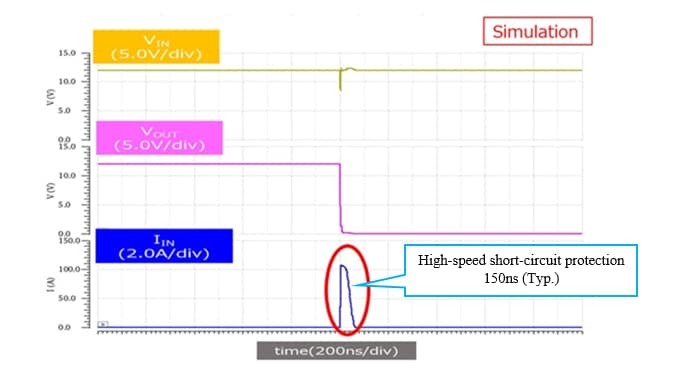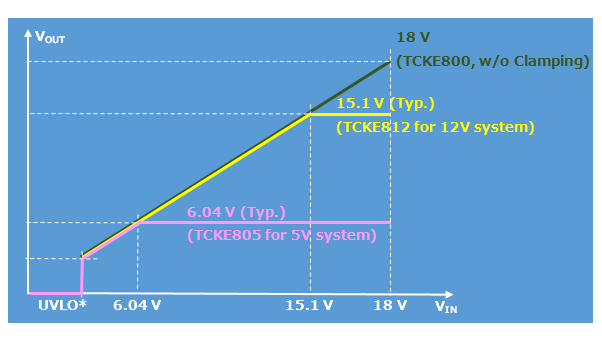- 半導體首頁
-
應用Automotive
Body Electronics
xEV
In-Vehicle Infotainment
Advanced Driver-Assistance Systems (ADAS)
Chassis
IndustrialInfrastructure
BEMS/HEMS
Factory Automation
Commercial Equipment
Consumer/PersonalIoT Equipment
Healthcare
Wearable Device
Mobile
Computer Peripherals
-
產品車用元件
Discrete Semiconductor
Diodes
電晶體
通用邏輯IC
Analog Devices
Digital Devices
Wireless Devices
※
: Products list (parametric search)
功率半導體※
: Products list (parametric search)
隔離器/固態繼電器Photocouplers
Digital Isolators
※
: Products list (parametric search)
MOSFETsIGBTs/IEGTs雙極性電晶體※
: Products list (parametric search)
Diodes※
: Products list (parametric search)
微控制器馬達驅動 ICs智能功率 ICs※
: Products list (parametric search)
電源管理 ICs線性 ICs※
: Products list (parametric search)
通用邏輯 ICs線性影像感測器其他產品其他產品
※
: Products list (parametric search)
-
開發/設計支援
開發 / 設計支援
-
技術知識
- 購買管道
- 型號 & 關鍵字搜尋
- 交叉搜尋
- 參數搜尋
- 線上庫存查詢跟購買
This webpage doesn't work with Internet Explorer. Please use the latest version of Google Chrome, Microsoft Edge, Mozilla Firefox or Safari.
型號需要超過三個文字以上 Search for multiple part numbers fromhere.
The information presented in this cross reference is based on TOSHIBA's selection criteria and should be treated as a suggestion only. Please carefully review the latest versions of all relevant information on the TOSHIBA products, including without limitation data sheets and validate all operating parameters of the TOSHIBA products to ensure that the suggested TOSHIBA products are truly compatible with your design and application.Please note that this cross reference is based on TOSHIBA's estimate of compatibility with other manufacturers' products, based on other manufacturers' published data, at the time the data was collected.TOSHIBA is not responsible for any incorrect or incomplete information. Information is subject to change at any time without notice.
型號需要超過三個文字以上
How quick is the protection speed of the electronic fuse?
Conventional glass tube fuses and chip fuses are heated by overcurrent and the conductive parts are melted. However, it takes a few seconds to make a physical blow. The poly switch that can be used repeatedly takes several hundred ms to several seconds to protect it from overcurrent generation, because it utilizes PTC [Note 1] in which resistance increases rapidly due to thermal expansion.
On the other hand, the electronic fuse (eFuse IC) is a semiconductor switch. The circuit is protected at an unprecedented high-speed because an error is detected in the semiconductor circuit and the current path is immediately shut down by MOSFET switch. In addition to being repeatedly usable, the short-circuit protection is 150 ns (Typ.), which is approximately 1 million times quicker than conventional fuses.
[Note 1] PTC: Positive Temperature Coefficient
Comparison of various fuses
Electronic fuse Toshiba eFuse IC |
Resettable fuse (poly switch) |
Chip fuse |
Glass fuse |
|
|---|---|---|---|---|
Protection method |
Shut down by MOSFET switch |
Current limit by resistance increase |
Blown conductive part |
Blown conductive part |
Protection speed |
150ns (Typ.) |
Several hundred ms to several seconds |
Several seconds |
Several seconds |
Repeated use |
Possible |
Possible |
Not possible |
Not possible |
eFuse IC utilizes semiconductor-based integrated circuits to provide not only a simple shut down function but also a variety of built-in protective functions. Main features are short-circuit protection, overvoltage clamping (OVP) [Note 2], overcurrent clamping (OCP) [Note 2] , overheat protection, inrush current suppression, reverse current prevention, etc., and conformity to the component standards of the safety standard IEC62368-1 for IT/AV equipment.
This article introduces short-circuit protection as basic function of fuse and lineup classification (overvoltage clamp/recovery operation).
[Note 2] OCP : Over Current Protection OVP : Over Voltage Protection
Quick short-circuit protection

The short-circuit protection function prevents excessive current flowing when the load is short-circuited due to an error. Toshiba eFuse IC has an ultra-high-speed circuit technique to shut down current in 150ns (Typ.) after a short-circuit occurs, which greatly contributes to robust designing of equipment. Unlike conventional fuses, they are not destroyed by a single short-circuit and can be used repeatedly, thus reducing maintenance costs and restoration time required for repairs. The figure below shows a simulated waveform when TCKE812 is supplying power of 12V and the output voltage is shorted steeply.
Lineup classification

TCKE8xx series has a lineup of clamping voltages at overvoltage and recovery operation types.
The overvoltage clamping voltage is set accordingly to system voltage to prevent an overvoltage being applied to the load. The product with the clamping voltage set to 6.04 V (Typ.) is TCKE805, and 15.1 V (Typ.) is TCKE812. If the overvoltage clamping function is not required, use TCKE800 that does not have this function.
The recovery operation type is a method to recovery from protective operation to normal operation, and two types are available. The auto-retry type will try to recover automatically until the problem is solved. On the other hand, the latch type latches when the overheat protection is activated, and recovers with an external control signal after the cause of the error is eliminated.
* UVLO: Under Voltage Lock Out
Recommended product list
Product Number |
|||||||
|---|---|---|---|---|---|---|---|
Data sheet |
|||||||
Stock check |
|||||||
Over voltage clamp VOVC Typ. (V) |
- |
6.04 |
15.1 |
||||
Recovery operation type |
Auto-retry |
Latch |
Auto-retry |
Latch |
Auto-retry |
Latch |
|
Package |
Name |
||||||
Size Typ. (mm) |
3.00×3.00, t=0.75 Max |
||||||
Operating ranges |
Input voltage VIN (V) |
4.4 to 18 |
|||||
Output current IOUT (A) |
0 to 5.0 |
||||||
Over current limit accuracy (%) |
±11 @Ta= -40 to 85℃、ILIM=4.38A |
||||||
On-resistance RON Typ. (mΩ) |
28 |
||||||

